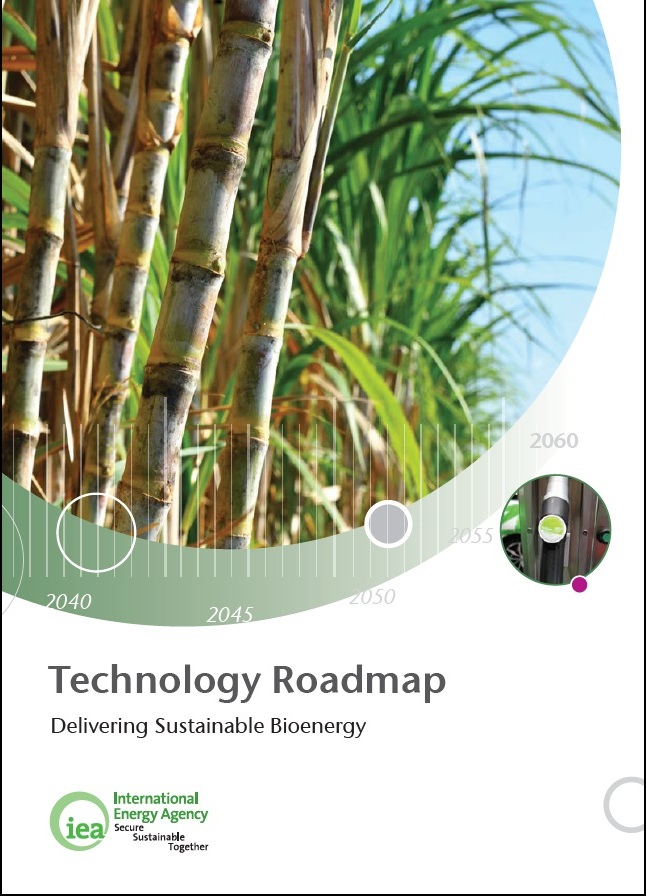IEA Technology Roadmap on Bioenergy
|
These documents are made available to Bioenergy Association members. |
About technology roadmaps
The primary goal of a technology roadmap is to highlight and accelerate the deployment of a specific technology or group of technologies. A roadmap is, simply put, a strategy or a plan describing the steps to be taken in order to achieve stated and agreed goals on a defined schedule. It determines the technical, policy, legal, financial, market and organisational barriers that lie before these goals, and the range of known solutions to overcome them. Roadmaps can be developed for different levels of deployment, including global, national or regional, and can be sector- or technology-specific.
 How2 Guide
How2 Guide
This publication is part of a series of manuals under the IEA Technology Roadmap programme – the How2Guides – that offer guidance on the key steps to developing and implementing a national or regional roadmap for some of the most important technologies. At a time when there are rising expectations of access to modern energy services, new milestones in the combat against climate change, and signs that growth in the global economy and energy related emissions may be decoupled, it is our hope that this publication will support efforts at both national and regional levels to fully realise the potential and benefits of bioenergy.
- Download the full How2Guide pdf 4.9 MB
 Technology Roadmap - Delivering Sustainable Bioenergy
Technology Roadmap - Delivering Sustainable Bioenergy
Bioenergy has an essential and major role to play in a low-carbon energy system. For instance, modern bioenergy in final global energy consumption should increase four-fold by 2060 in the International Energy Agency’s 2°C scenario (2DS), which seeks to limit global average temperatures from rising more than 2°C by 2100 to avoid some of the worst effects of climate change. Plotting a path for bioenergy, the International Energy Agency’s new “Technology Roadmap: Delivering Sustainable Bioenergy” provides the technology milestones and policy actions needed to unlock the potential of bioenergy in line with a long-term low-carbon and sustainable global energy mix.
The work was carried out in close association with the IEA Bioenergy Technology Collaboration Programme (TCP), who provided information and helped develop many of the insights it contains.
- Dowload the full Technology Roadmap report pdf 2.5 MB
